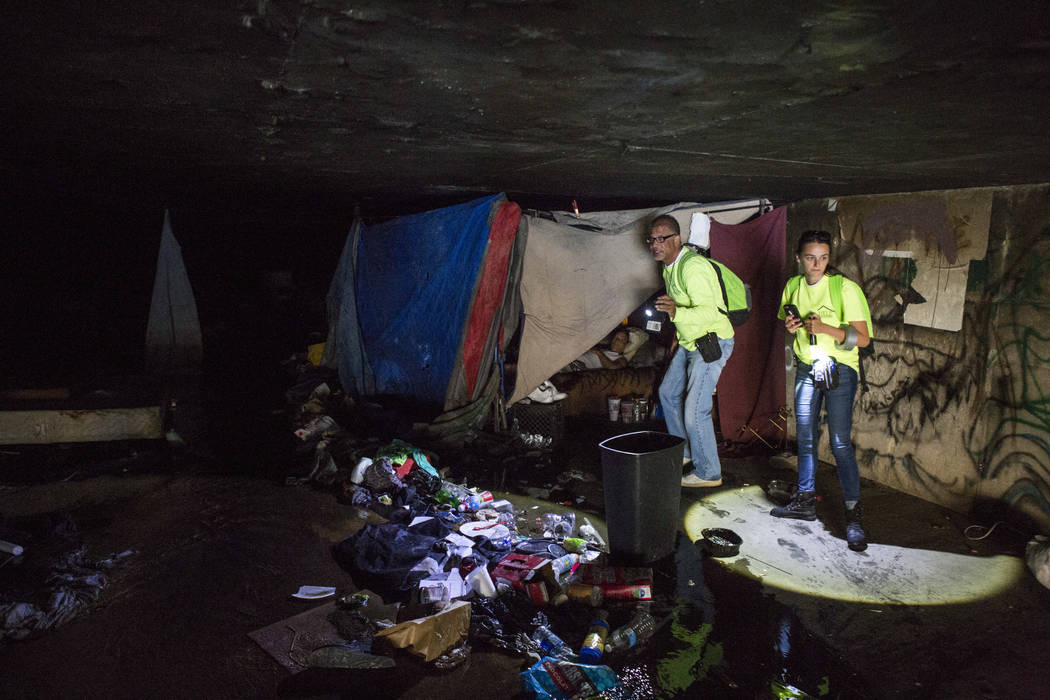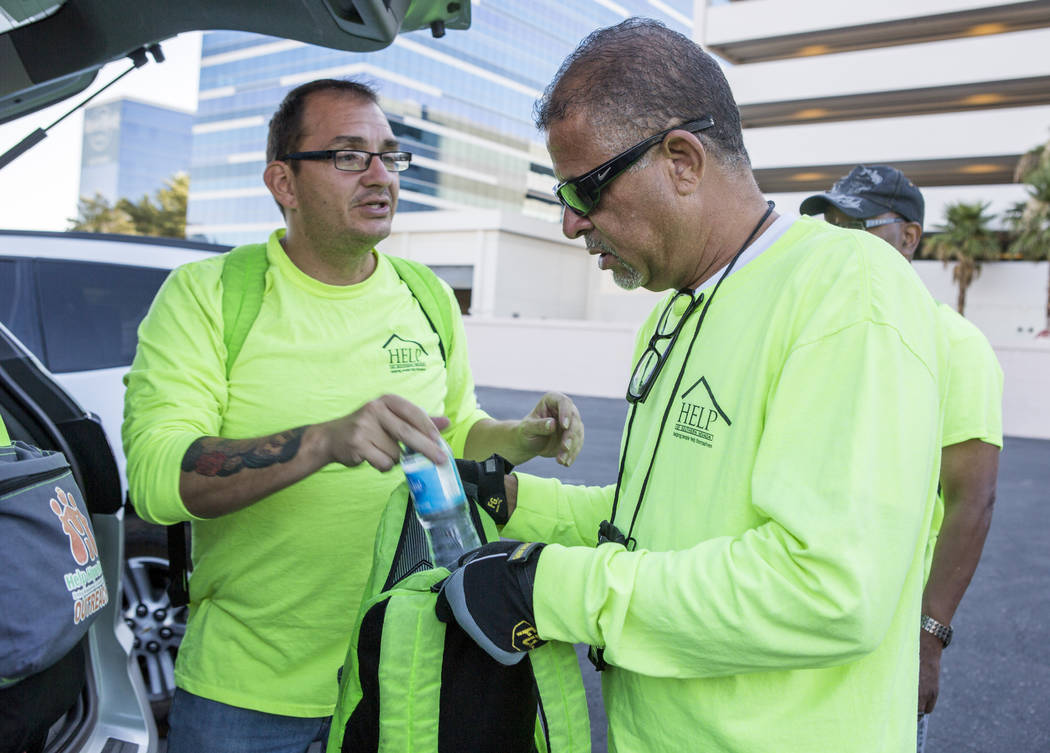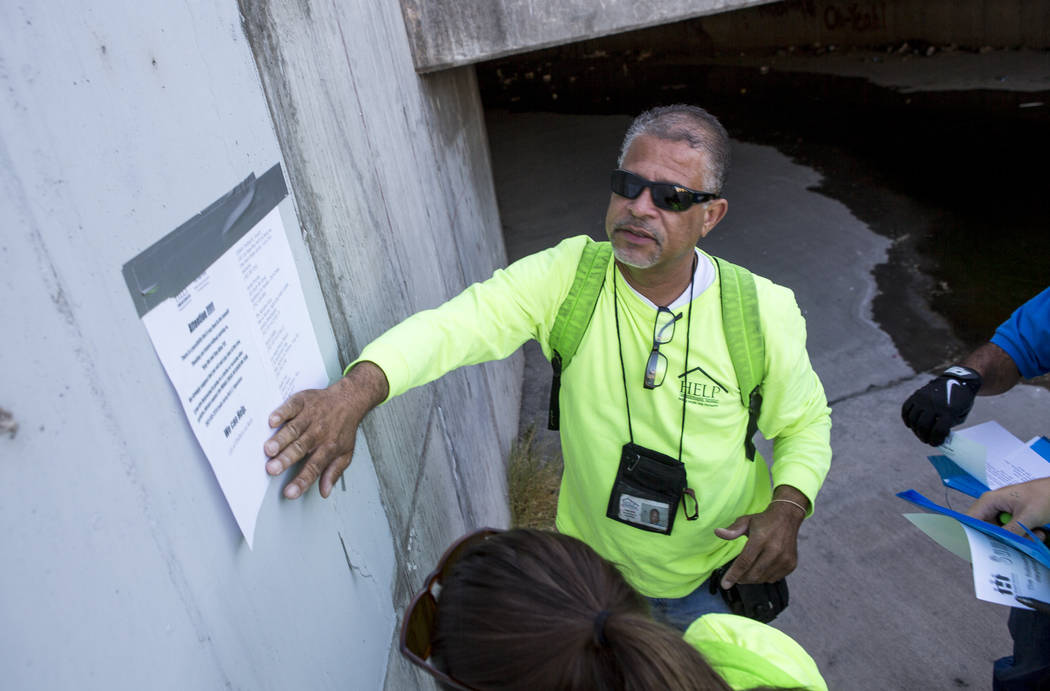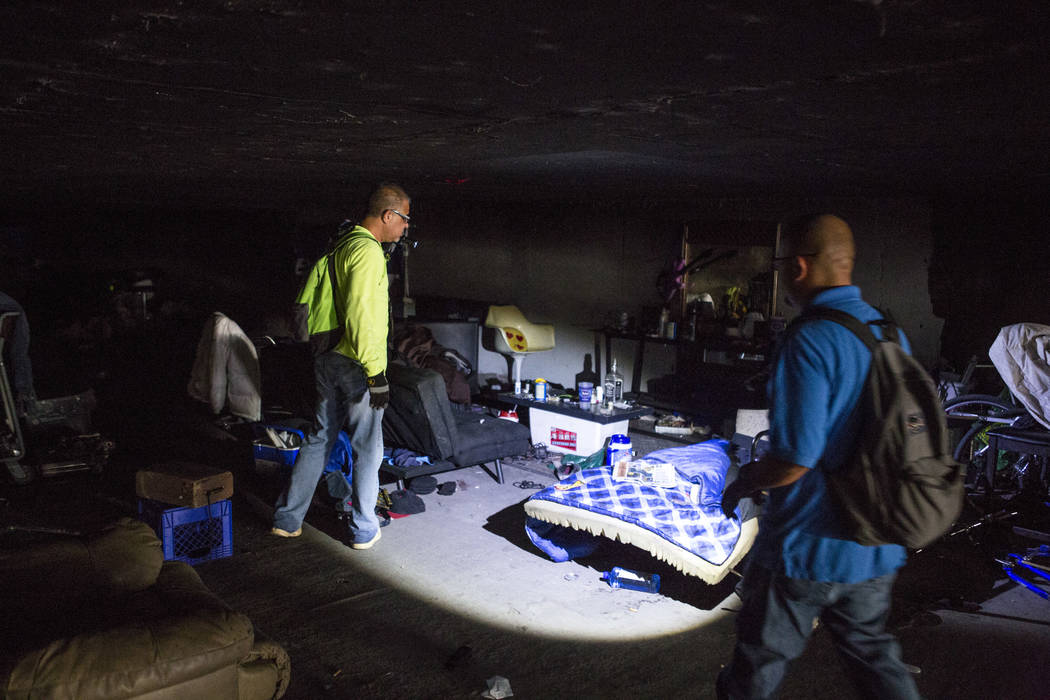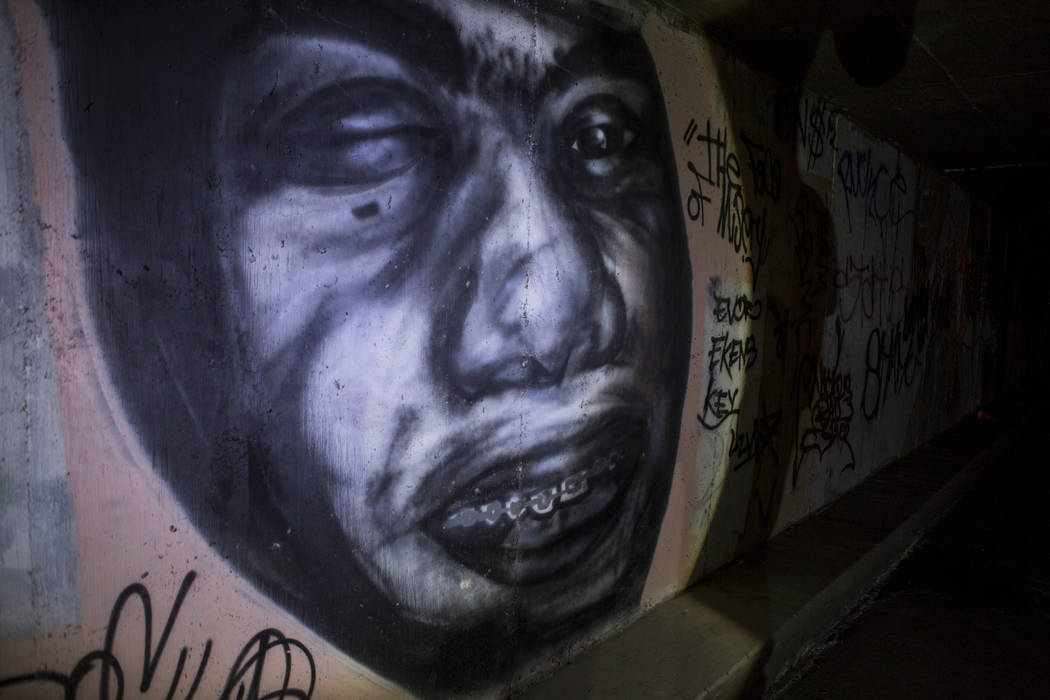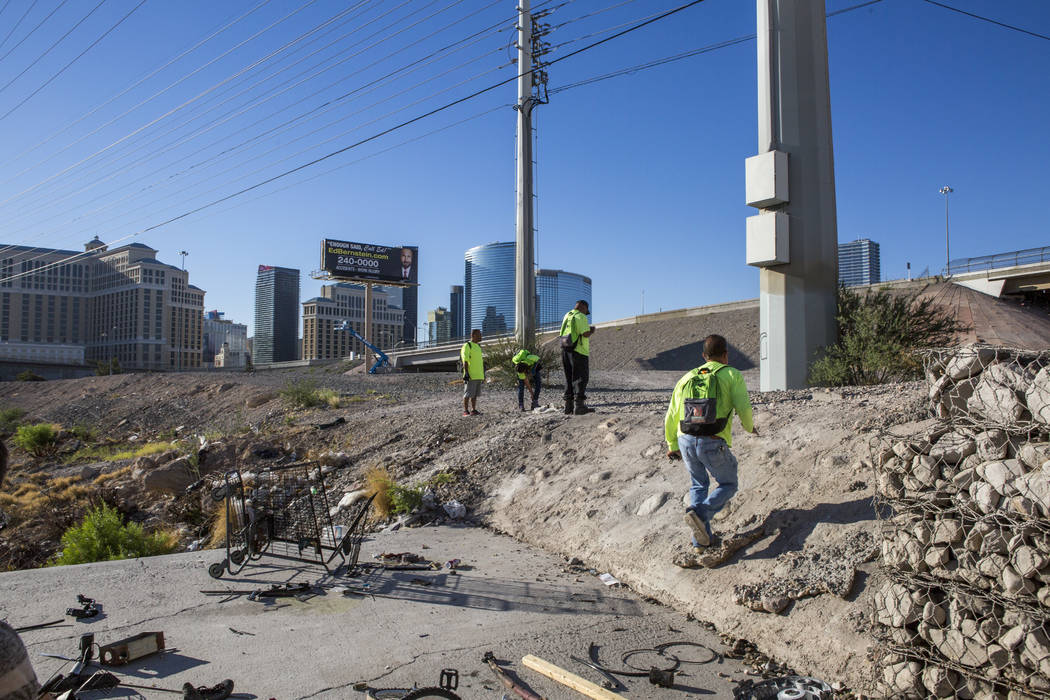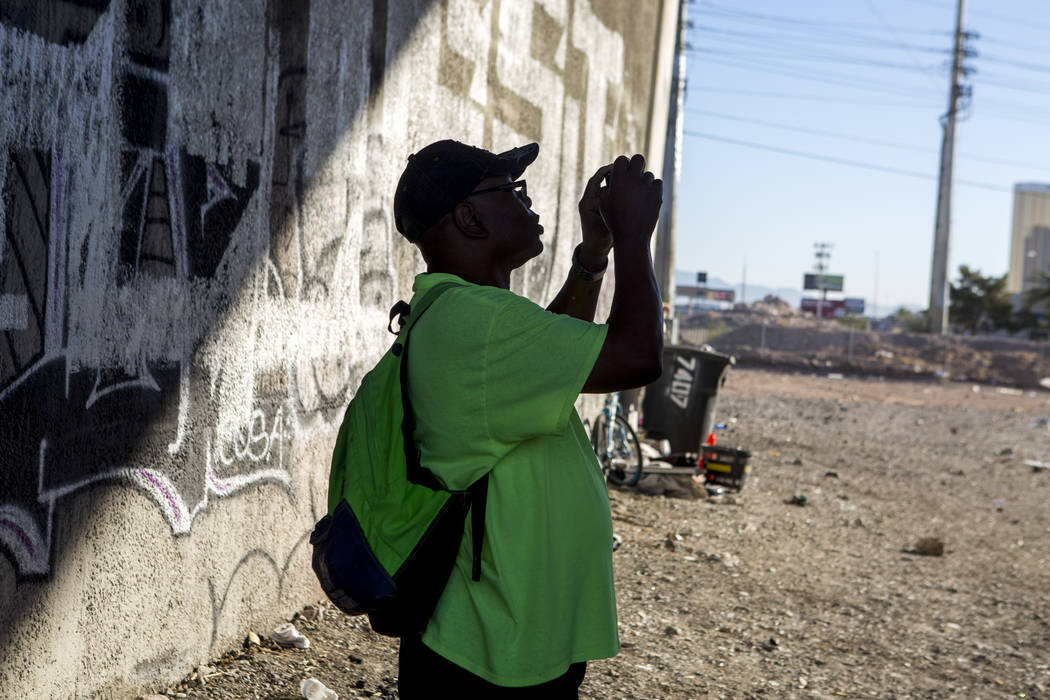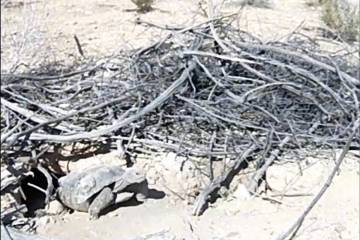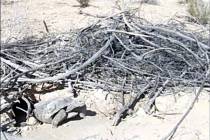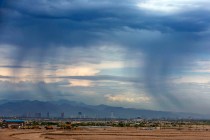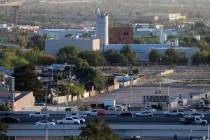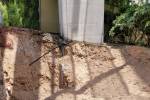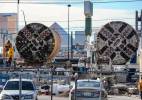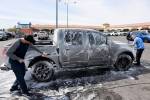In tunnels under Las Vegas, monsoon rains can pose deadly threat
The first pains came before 8 a.m. The woman who lived in the tunnel had been out gathering blankets and pillows all night. But then, the contractions started.
It was 92 degrees out, and she was 8½ months along. She’d never seen a doctor. When a group in neon shirts offering homeless services came through the tunnels, she was whimpering for help. The neon team called an ambulance.
Nearly a year to the day after the tunnels claimed one life in the flash floods of an early monsoon season, another tunnel under the Strip began ushering in a new life. As many as 1,000 people still reside in the tunnels — and they are the most vulnerable during monsoon season, which starts July 1 and lasts through September.
“It’s a dangerous place to live,” said Erin Neff, a Regional Flood Control District spokeswoman.
There have been 32 flash flood deaths in Clark County since 1960, according to the flood control district. Last year, the county fire department received 56 flood rescue calls.
On June 30, 2016, rescuers found one woman’s body covered in debris in a wash near Mandalay Bay Road and Giles Street and rescued another, unresponsive person at the National Golf course, who later died.
“That was a very sad day,” Neff said. “These are horrible deaths, and we don’t wish it on anyone.”
■ ■ ■
The Las Vegas Valley gets only 4 inches of rain annually, and sometimes can get half of that or more in just 15 to 25 minutes in these summer months, Neff said. The water goes up to 30 miles per hour in the concrete channels and natural washes where some homeless people live. The washes are made for water to travel twice as fast as rivers.
Last year, the district reported that water in Pittman Wash went from a trickle to 2½ feet in 20 minutes. The 80-foot-wide Duck Creek wash at Broadbent Boulevard rose from zero to 3 feet of water in less than 10 minutes.
To help minimize the threats for those living in the wash, Louis Lacey starts his shift at 5:30 a.m. Lacey has worked for HELP of Southern Nevada, a nonprofit offering homeless services, for 10 years.
At the entrance of a tunnel underneath the Hard Rock Hotel, he stopped near a wall spray-painted with copper-colored letters reading “Entry Denied.” He was equipped with the essentials. Hygiene kits. Blankets. Socks.
But first, he hung a sign.
“Attention: There’s a possibility of flooding.” Right below: “Stay out and stay alive.”
Illuminated from Lacey’s flashlight were strings of broken Christmas lights, old mattresses, shopping carts. Needles. Guitars. Bicycles. Couches.
“All of these things become projectiles,” he said, his shoes squishing on the wet concrete. “That’s how people die.”
He called, “Anyone home?”
Sheila North was. In her tent, the puffy-eyed woman with graying sand-colored hair needed help. Lacey set her up with a hygiene kit and signed her up for a drug assessment.
She’s lived in the tunnels for 11 months, she said, her cheeks sinking in from her missing teeth. And she remembers last year’s flash flood. North, 45, had helped save her boyfriend, Devon, from the raging waters. It only took five seconds for the wash to fill up, she said. And her boyfriend didn’t want to get out.
“He’s hardheaded,” she said. But he was pulled out of the current by ropes. “We got him in the nick of time.”
■ ■ ■
Deputy Fire Chief John Steinbeck recalls the three people stuck in the wash on Flamingo Road, behind Station 18, last year.
“Once the rain started, we actually saw them go by,” he said. “It’s such a dynamic scene.”
The responders tried to catch up, but current swept them away, and it was almost as if they were flying by, Steinbeck said. The turbulent, violent waters and wreckage can pull people under. Rescuers used two ropes to create a lasso and pull victims from the water. Two were saved; one drowned.
The fire department has partnered with the Wet ‘N’ Wild water park to practice its swift-water rescue, said Patrick Foley, emergency medical services coordinator, so “we can become more proficient in using skills that are used very rarely.”
Foley said being in the wash is very different from being in a swimming pool.
“In the pool, you’re not typically dodging debris,” he said. “When pushed against a shopping cart, the likelihood of survival is pretty slim.”
■ ■ ■
Lacey’s brown Chevrolet Traverse puttered up against the Las Vegas traffic Tuesday morning. As he drove, he ticked off the reasons why some people who live in the tunnels resort to the streets. Gambling. Mental illness. Substance abuse.
The tanned 55-year-old with a salt-and-pepper goatee knew the feeling. In his 30s, he spent three years on and off the streets, battling a methamphetamine addiction. He went to treatment in handcuffs.
After that, he turned his life around.
“Some people get arrested,” he said. “Some people get rescued.”
Underneath the Flamingo freeway is a blue tent, where an old Marine veteran with long, blond hair lives with his wife and a chubby, white terrier-mix named Franklin.
Tossing a piece of cooked meat to Franklin, the man known as Papa Smurf looked toward the tunnels. He’s lived here for almost two years. The floods don’t affect him, he said. He has shelter.
“But those washes over on that side,” he pointed and waved. “See you later.”
Contact Briana Erickson at berickson@reviewjournal.com or 702-387-5244. Follow @brianarerick on Twitter.
Flash flood safety tips from the Clark County Fire Department and Emergency Management officials:
— Never drive through a flooded road or around barricades. It can be difficult to determine how deep floodwaters are and floodwaters can rise dramatically in minutes.
— If you are caught in a sudden storm that may cause flooding, it is usually safer for you to stay where you are and wait out the storm rather than trying to drive through it.
— If you are driving when the storm hits, consider finding some ground higher than the street to pull onto until the storm passes.
— If you get stuck in a stalled car, it may be safer to stay with your vehicle. Fast-moving water, even only a few inches deep, can quickly sweep you off your feet.
— Never let children or pets play in or near floodwaters, which are fast moving and can contain dangerous debris and chemicals.




